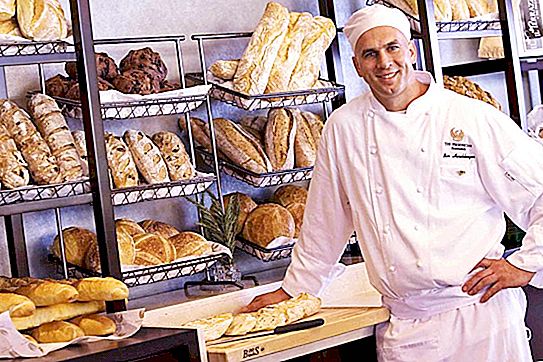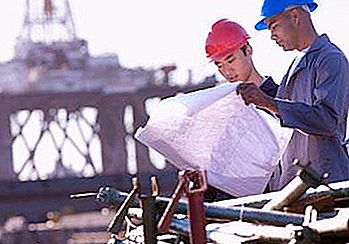A person who manufactures complex models of furniture, and also manufactures doors, windows, arches, stairs and other wood products, is called the "carpenter". The work of this artisan is directly related to the solid wood. He can apply various technologies, such as plywood, veneering and lamination. In this case, the carpenter does not perform manual threading.

Who is a carpenter: in more detail about his duties and capabilities
The main functions that the carpenter performs are:
- Making a variety of wooden items.
- Proper assembly of manufactured products.
- Installation of wood products (if required).
Among the products for the manufacture of which joiners are attracted are cabinet, office, upholstered furniture, windows, doors, railings, steps and other interior items (functional or decorative).
In addition, knowing who the carpenter is and what his responsibilities are, the customer can hire him to clad the walls with wooden panels, insert the door lock and install the handle.
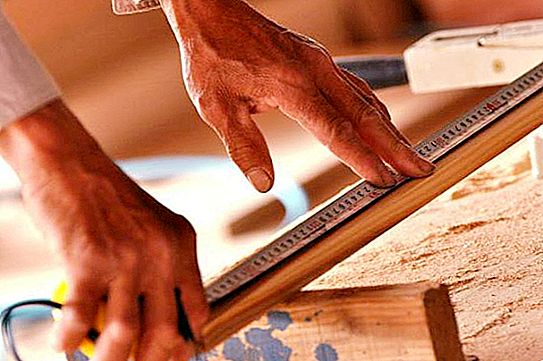
Who can be a joiner
Thinking about choosing a future profession or retraining, it is worth considering that not everyone can become a good joiner. Professionalism and a high level of manufactured products directly depend on how much the person’s temperament and personal qualities correlate with the characteristics of the labor process.
What is necessary for the future joiner:
- To love a tree.
- Possess good health (vision, joint-muscular sensitivity, endurance).
- Be able to distribute your attention well.
- To have a quick hand-eye reaction.
- Possess the ability to long-term concentration of attention, as well as be able to flexibly distribute it.
- Be sure to own a good spatial imagination.
- Have developed visual-figurative thinking, attentiveness, accuracy.
The knowledge needed by a joiner at work
Requirements for the joiner:
- Knowledge of the properties of wood of all significant species of trees.
- Ability to process material and knowledge of methods for sealing individual places.
- The concept of wood defects.
- Knowledge of the methods that are used in the manufacture, fitting and hanging of carpentry.
- Knowledge of existing technologies and equipment used in carpentry.
- Ability to read blueprints.
Often, joiners have specialized secondary education. True, there is a likelihood that in the enterprise where this person will work, he will be trained in all the necessary skills, so having experience is not very important.
Certain aspects of the work of a joiner
Having figured out who the joiner is and what functions he performs, you can go on to describe his tools. The inventory of workers whose activities are related to wood processing is divided into several categories:
- Measuring and marking devices (rulers of different types and purposes, squares, levels, compasses, tape measures, scribblers, pencils, etc.).
- Sawing tools (band, cross, circular saws, jigsaws, knives, cutters).
- Drilling and thread-cutting equipment (tools for applying threads, perks of various kinds, drills and drills, kolovoroty, awls, drilling machines).
- Ancillary tools (hammers of different sizes and shapes, hammers, staplers).
- Equipment in the workshop (workbenches, vice, clamps, mallet, planers, chisels and jointer, milling and planing saws, other small and large tools, as well as devices for sharpening and lubricating them).
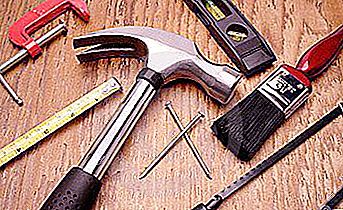
The tool of the joiner often contains sharp edges or is equipment with fast-moving sharp elements, therefore, in the process of work, the master should show maximum attention and accuracy.
In order to exclude the occurrence of possible accidents, enterprises have mandatory safety training.
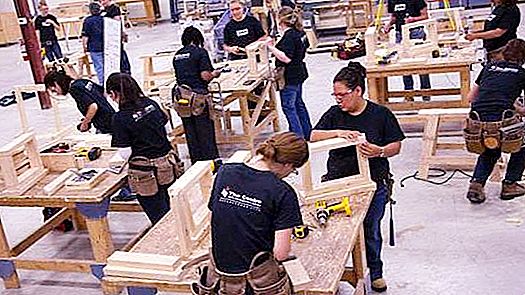
Related professions
There are specialties that include elements of several related professions or are characterized by a very small list of duties of one of them. For example, a woodworker is not related to the assembly of finished products, their grinding or fitting. His tasks include only work with the use of electrical equipment.

At the same time, the carpenter carpenter combines the duties included in the job descriptions of two similar professions: the carpenter and the carpenter. As a carpenter, he can perform coarse clipping, cutting and transverse sawing of wood materials. He is also expected to be able to embody complex carpentry tasks. As a carpenter, such an employee makes the simplest wood products (scaffolding, goats, packing cases, lathing and pallets).
Professional costs
After describing who the carpenter is and what his responsibilities are, you can understand what shortcomings are characteristic of this profession. First of all, it is physical fatigue resulting from constant active work.
There are also some diseases that are most often diagnosed in joiners:
- Damage to the respiratory tract (lungs, nasal cavity).
- Injury of the motor apparatus (sacrum, spine).
- High risk of injury to the limbs (fingers, palms, legs and feet).
- For woodworkers, a gradual decrease in hearing is characteristic.
At the moment, the carpenter refers to professions with an average level of demand. Entering the enterprise, the employee can hope for career growth, an increase in the category and increase to the foreman.
Having a higher education, the carpenter can apply for the post of master or foreman. If desired, he is able to retrain and become a carpenter or SUV.


